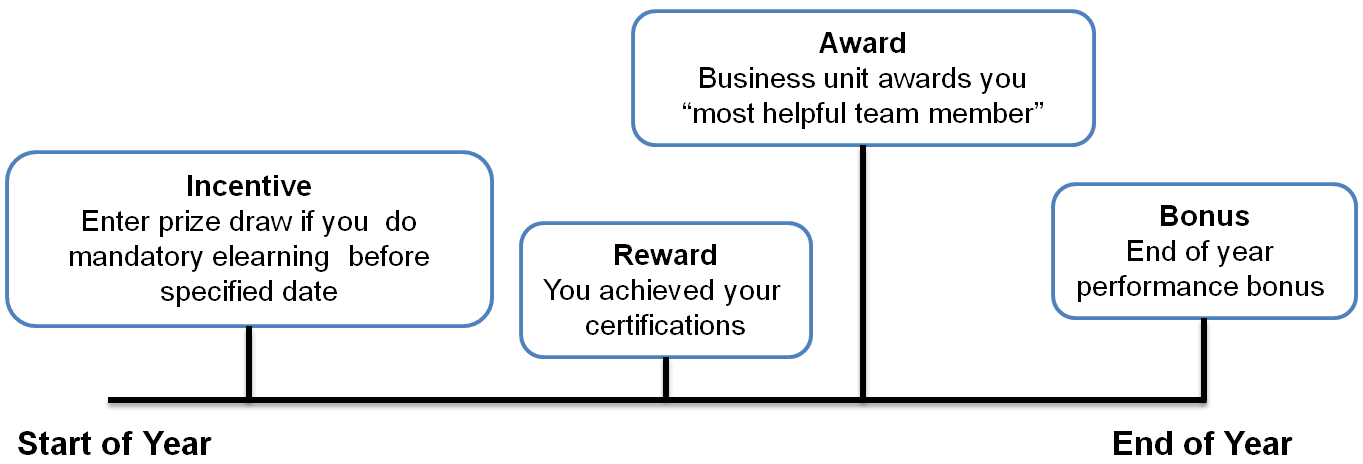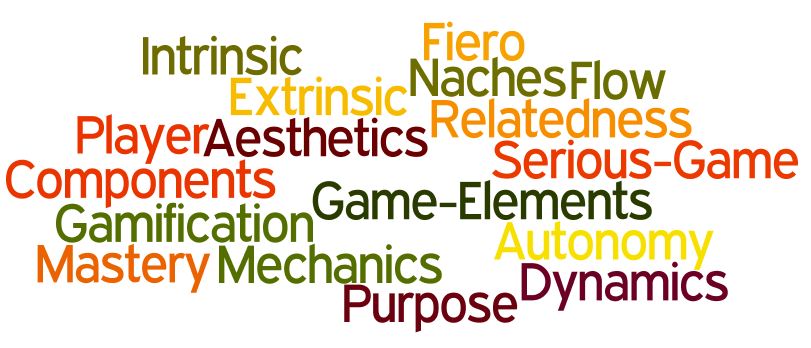We’ve all been there. You stop at traffic lights, and a frenzied delivery cyclist swiftly zips in front, ignoring the light. Perhaps you’re at KFC, jostled by a swarm of Deliveroo and Uber Eats drivers, all clamouring and gesturing at order numbers on their phones. Or maybe you find yourself unable to access your driveway because a colossal white van obstructs it, while an Amazon delivery person leaves £300 worth of electrical goods on your neighbour’s doorstep in the pouring rain.
incentives
Gamification Thoughts in the Medium of Memes
I think this first one is pretty self-explanatory. Engagement is about people wanting to do things. They find value in the activity. If they feel that they are forced to do it and that outweighs the value, they will never be fully engaged.
A brief set of definitions. There is more to be found on this in my Serious Games vs Gamification / Game Thinking page
I have touched on this before. There are very subtle differences between the idea of incentives and bribes. It is important to understand them. Bribes are about people doing things just because there is a reward. Incentives are about rewarding people for doing things
I want to spend a little bit of time on these two.
=&0=&, power and responsibility.
A lot of people feel that the inclusion of “Gam” in the word “Gamification” makes it a trivialisation of what people are doing. These are important serious people doing important serious jobs, they have no interest in games. Putting aside all of the data that might suggest that they are exactly the sort of people who play games… we need to be sure that we are not actually trivialising the work.
At its core, gamification is about information. You are giving people information to help them understand how they are progressing, what they are doing well, where they are failing and how they can turn it around. This can be by way of simple paper charts, or complex online “big data” driven systems (gamification is NOT digital). Giving people this information empowers them to make decisions about how they work and adapt, in turn giving them a chance to take responsibility for their own actions and progress. Because gamification tends to give more regular feedback than traditional methods (think annual review), people can adapt and adjust their strategies as they need to, not just when they are told to by the powers that be!
The final image shows how information, empowerment and responsibility can all be supported and driven by gamification
And one final afterthought 😉
Bribes, Incentives, Bonuses, Awards and Rewards in Gamification
It is actually an interesting and very relevant question in gamification circles as they all get mentioned from time to time, so I thought I would tackle it a little here.
First, let’s look at the standard definitions (from http://www.oxforddictionaries.com/).
- Bribe:
- Dishonestly persuade (someone) to act in one’s favour by a gift of money or other inducement.
Incentive:
- A thing that motivates or encourages someone to do something
- A payment or concession to stimulate greater output or investment.
Bonus:
- A sum of money added to a person’s wages as a reward for good performance.
Award:
- Give or order the giving of (something) as an official payment, compensation, or prize to (someone).
Reward:
- A thing given in recognition of service, effort, or achievement
Indirect Incentives: Good or Bad in Gamification?
Recently I heard an interesting idea on how to indirectly incentivise employees to do a particular voluntary task. The plan was that every x percent of people who did the task would translate into a charitable donation from the company to a charity voted on by the employees.
My first thought was “great, they finally get that you should stop trying to incentive everything with competitions or gift vouchers!” However, after I thought some more, I began to feel that this was still a bad idea…
First of all, let’s look at a couple of types of incentives.
- Material Incentives: These are rewards that have a direct material value to a users. Money, prizes that sort of thing.
- Non Material Incentives: These are rewards that have no direct material value. Points, Badges, virtual currency.
These are both direct incentives, the user gets some sort of personal benefit from getting them.
- Indirect Incentives: These are incentives that the user gets no personal benefit from. Charitable donations, sponsoring a puppy in Outer Mongolia – that sort of thing.
Initially it looks like indirect incentives are the perfect storm. They appeal to the altruist / philanthropist in us all. They cost less as you are not giving everyone a reward. There is competition, there is social pressure (you don’t want to be the one that lets down the puppies in Outer Mongolia) and more.
So, do the task and feel good about helping a charity…. right?
I’m not sure. An incentive is still an incentive – it is still an extrinsic reward. There is still the risk that you will get people only doing the task for the reward – direct or otherwise. You still potentially sacrifice quality for quantity.
What’s worse here is that whilst it is voluntary, not doing it doesn’t just affect your chances of a reward, now it affects charity. This is in fact Shamification. So you are being forced to do something that is meant to be voluntary by being made to feel socially guilty if you don’t. Again, this will get people responding just to not be seen as not responding. This again boosts quantity over quality and possibly creating negative or resentful feelings!
Another factor here is many will see this as “You have money to save puppies, but not to give me a financial boost? How much do you really value me doing this task then?”.
What are the answers then?
Honestly, I don’t really know – but here are some things to think about when you consider any types of incentive, direct or indirect.
Gamification is sh1t. Let’s make it better.
Now back to my point.
Gamification, in far too many cases right now, is indeed shit. I am not saying gamification itself is bad, just a lot of the uses and applications of gamification that we are seeing out there falls into that particularly odorous category.
It’s as if gamification has become the duct tape of user design. “The user experience is a bit off, what should we do? Add gamification”. “The system is not great, people get stuck and don’t like using it, what should we do? Add gamification – points and badges will fix it!”. “We need to improve efficiency in the department. How can we do that? A leaderboard you say? Let’s do it!”
Rather than using gamification as part of the overall design, to help enrich the user journey and experience, it is used to patch bad design – making it ultimately worse. Gamification is not a solution looking for a problem, it is a way of thinking and designing that puts the user at the centre of the experience. If it is not done this way it will fail and fail in terrible ways!
We can make this better and here are a few ways you can start.
Think RAMP.





